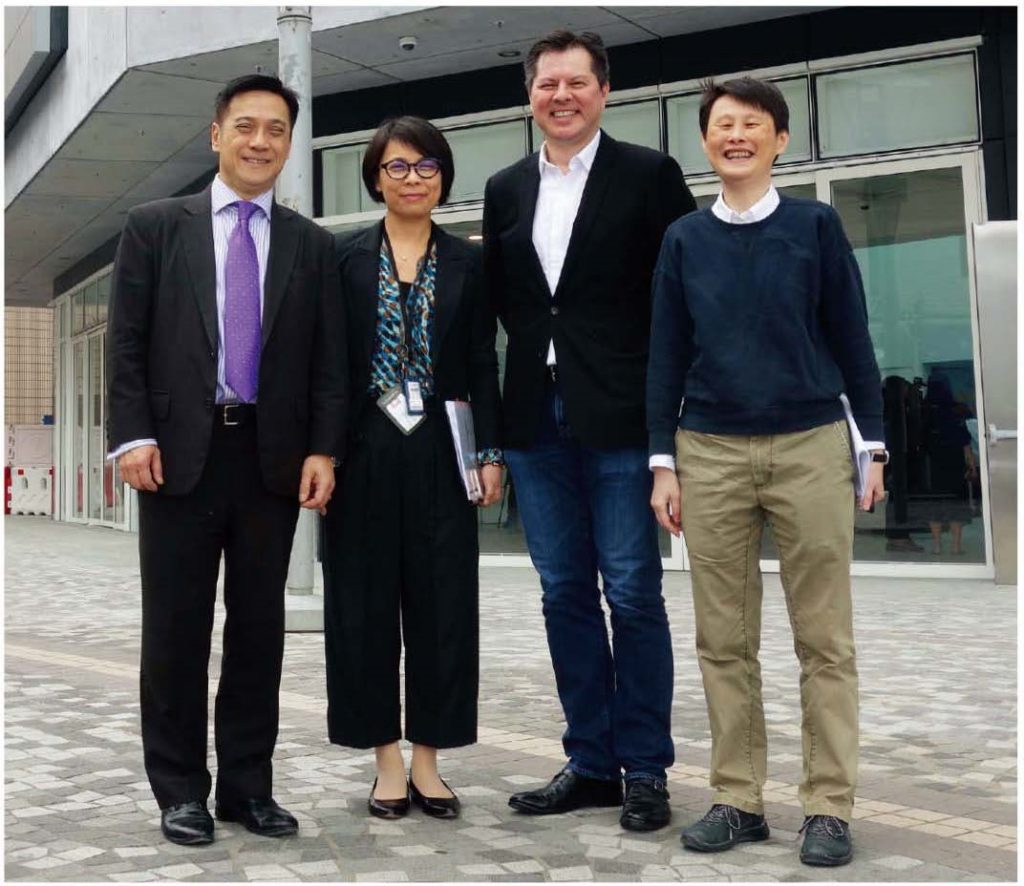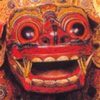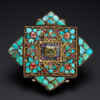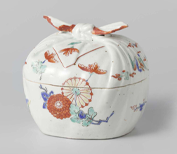
AFTER MAJOR expansion and renovation work, the Hong Kong Museum of Art (HKMoA) will reopen in November this year. I am pleased to present in this issue seven articles that explore the HKMoA’s world-class collections—from Chinese ceramics and works of art to classical and modern paintings. These fascinating articles, written by the museum’s curators and experts, acknowledge the outstanding contributions made by generous individuals and major collectors associated with Hong Kong over the past fifty years. The articles also feature special exhibitions that will be held to coincide with the reopening of the HKMoA.
During my tour of the building and galleries earlier this year, I was impressed by the greatly enlarged exhibition space and upgrades in the museum’s facilities: the total exhibition area will increase from 7000 square metres to 10,000 square metres; the number of galleries will increase from seven to twelve, including a 9-metre high gallery in the new annex block; and two new galleries will be provided on the extended roof of the museum. In my opinion, the architects have successfully enhanced the visibility and accessibility of the museum—the reception lobby has been relocated from the first floor to the ground floor, with four entrances to enable visitors to access the museum from different directions.
There is no question that the renovated museum, with its extended Art Square in Salisbury Garden together with the outdoor Art Corridor, will transform the atmosphere on the Tsim Sha Tsui waterfront and increase its vibrancy. I would sincerely like to thank Dr Maria Mok, the Museum Director, and the HKMoA curators for their scholarly articles. I am confident that the renovations and enhancements at the museum will be very well received by Hong Kong residents, as well as by art lovers from around the world.


Asian Art in London (AAL) will hold its 22nd edition from October 31st to November 9th, 2019. This year, the Gala Party will be held at Bonhams New Bond Street on Tuesday, November 5th, with tickets priced at £50 and available from the AAL website (https:/ /www.asianartinlondon.com/ content/aal-2019-party-page). Forty-six participants, including thirty-three dealers and thirteen auction houses, will show antique and contemporary artworks from East Asia, the Himalayas and Central Asia, India and Southeast Asia, and the Middle East. This year’s late night gallery openings will take place as follows: Saturday, 2nd November – Kensington Church St; Sunday, 3rd November – St James’s; and Monday, 4th November – Mayfair. Illustrated are a number of the anticipated highlights.
Marchant will present a somewhat different, but very interesting, exhibition, “Qing Porcelain from Three Private Collections”. Each of the three highlighted collectors shares the same passion for collecting: Tang Shaoyi was the first Prime Minister of the Republic of China in 1912; the Frenchman, Henry Mazot, arrived in Peking (Beijing) in the early 1920s and worked for the Bank of Indochina, where he became Chairman after a twenty-five year career; and Jeffrey Stamen, an avid collector of Chinese porcelain, is extremely well respected for his knowledge and study of Kangxi wares. (For more information about Mr Stamen, Rose Kerr’s thoughtful review of A Culture Revealed: Kangxi-Era Chinese Porcelain from the fie Rui Tang Collection, by Jeffrey P. Stamen and Cynthia Volk, was published in the Arts of Asia November December 2018 issue.)
Eskenazi will show the first exhibition at their gallery devoted solely to objects from the Chinese scholar’s studio. Presenting a wide selection of intimate objects, including rocks, paintings, furniture, bronzes and brushes, “the exhibition celebrates the culture of the Chinese scholar who occupied a unique position under imperial rule at the top of the country’s hierarchical society for over 1000 years”.
One of the highlights at Littleton & Hennessy Asian Art is a rare miniature Beijing enamel “Hu” vase, Qianlong seal mark and of the period. This delicately painted piece measures only 5.7 cm and is decorated in falangcai (foreign enamels) with lingzhi and bats, symbolising longevity and happiness.
Ben Janssens is pleased to present a selection of Chinese works of art on the theme of “Mythical Animals”. The exhibition ranges in date from the Warring States period, 5th century BC, to the 19th century and encompasses a variety of materials as diverse as pottery, stone, porcelain, lacquer, jade, soapstone, glass, amber and enamel.






Collectors of important Japanese artworks will appreciate Simon Pilling’s exhibition, “REIWA—beautiful harmony”. This year marks the beginning of a new Imperial era—Reiwa—the fifth since the end of the Tokugawa Shogunate. In each era, the arts have played a key role in reflecting the challenges of the time. Simon Pilling examines this through the works selected for his exhibition.
Sydney L. Moss Ltd will feature intriguing works of a small group of Chinese Buddhist monks, who travelled to Japan in the 17th century, producing art that perfectly fused traditions from both cultures. A particular highlight of the exhibition will be a Japanese hanging scroll depicting two crabs in delicate, simple brushstrokes by Sokuni Nyoitsu (1616–1671), one of the most famous monks of the Ōbaku school.
I also look forward to visiting my friends, Runjeet Singh and Susan Ollemans. A specialist in Asian arms, armour and related works of art, Runjeet Singh will show a wonderful 18th century Indian hunting shield and a 17th century Ottoman dagger. Susan Ollemans will be exhibiting a fine collection of Asian jewellery, with a focus on items from India and Indonesia. Illustrated above is a stunning gold bead necklace from the Pyu dynasty of Burma (Myanmar) .

This year, the Martyn Gregory Gallery of London celebrates “Catalogue 100″—the hundredth catalogue produced since Martyn Gregory embarked on his remarkable career as an art dealer in the late 1960s. The Martyn Gregory Gallery will be holding its annual Hong Kong exhibition at the Hong Kong Maritime Museum from November 7th–16th, 2019. The title of the show is “200 Years of ‘China Trade’ Painting 1770–1970”, featuring detailed watercolours and impressive oil paintings by exceptional Chinese artists, as well as a large group of works by George Chinnery.
Finally, although this has been quite a challenging year for the Asian art world, I remain cautiously optimistic about the coming year. Let me, therefore, take this opportunity to wish all of our readers a very happy Christmas and New Year.

Please click here to view the contents of this issue.

 Subscribe
Subscribe Calendar
Calendar Links
Links Gift
Gift


